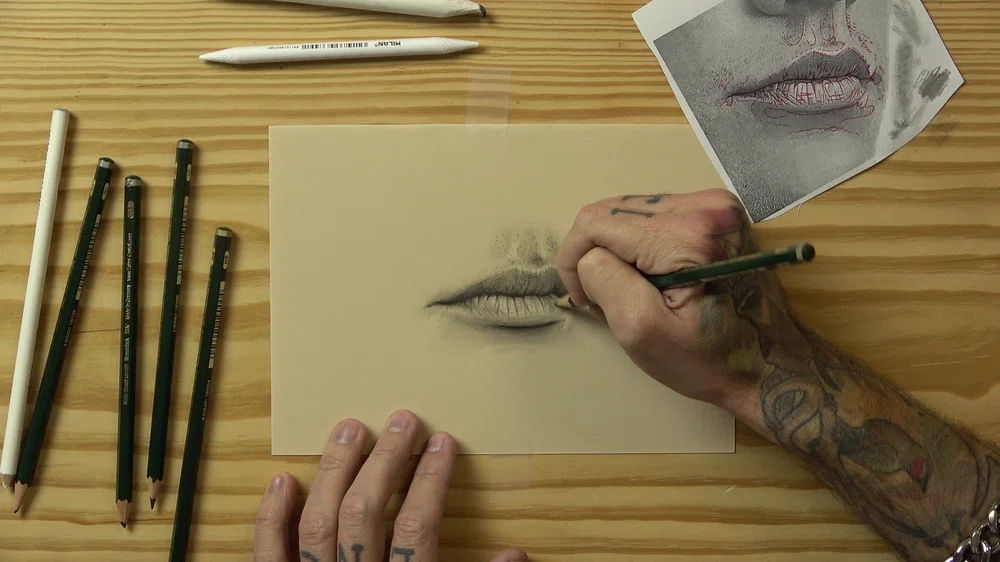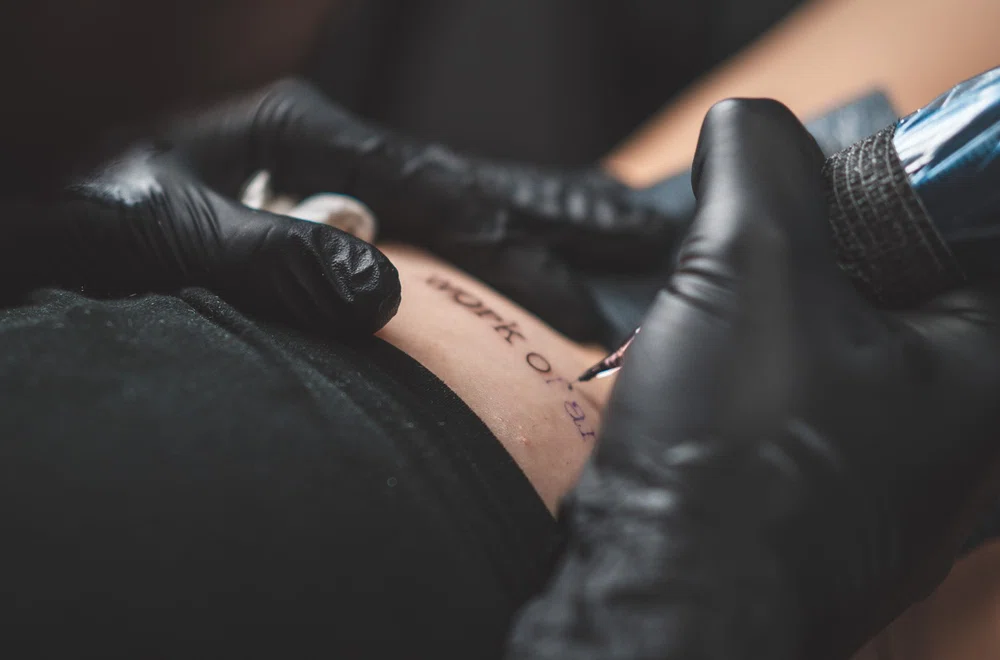The 3 pillars of tattoo design
Pillars of tattooing and tips to master them
19 October 2023
Tattoos are an ever-evolving art form. But to achieve good results, it is not only about the creativity and originality of your design; it also relies on your skill and technique as a tattoo artist.
Each tattoo is a unique work of art that requires a combination of artistic, technical, and methodological skills to create a satisfying outcome for both the client and the tattoo artist.
In this post, we will delve into the three fundamental pillars of tattoo design: drawing, methodology, and technique. We will explore the significance of each pillar and how they influence the creation of high-quality tattoos.
If you are a tattoo artist or simply passionate about the world of tattooing, we invite you to keep reading to expand your knowledge.
The drawing
To know how to tattoo, you must know how to draw.

We've said this many times, but it is true nonetheless... If you do not know how to master the resources of pencil and paper, as well as digital drawing, it will probably be too difficult for you to learn to design tattoos, so, much less, to learn to design your own tattoos to achieve your own style.
In turn, there are more complex tattoo styles that require great knowledge of drawing, such as the realistic tattoo.
In this case, when we talk about drawing, we refer to the ability to understand the composition of the reference image and reproduce it exactly on paper.
In Realistic Tattooing, you need to copy the images perfectly, and for that, you must distinguish what the image is made of, and where the highlights, shadows, and contrasts are.
Learning how to draw Realism is something that can take you years, and there are artists who say that it has taken them a lifetime. But this should not discourage you at all; instead, take it as a challenge that, if you manage to do it successfully, can take you far in your professional career.
All the same, there are those who say that drawing with pencil and paper is the best because it gives you total freedom to make mistakes and erase them as many times as you need.
Overall, to master a realistic tattoo, you do not have to think about how to tattoo Realism, but how to draw Realism.
Drawing holds significant importance in all styles of tattooing. A skilled tattoo artist should possess the ability to create their own designs, not only to showcase their individuality but, more importantly, to effectively address any challenges that may arise during the tattooing process.
It is quite common for stencils to fade or for certain design elements to require on-the-spot improvisation as the tattooing progresses. To successfully navigate such situations, extensive training and a steady hand are essential.
Drawing serves as the foundation for this training, making it a crucial aspect of tattooing.
The methodology
Broadly speaking, we can say that the methodology is the knowledge that leads you to strategically achieve a goal.

Having a good methodology and a strong grasp of drawing is crucial for success in tattooing.
However, acquiring these skills takes time and experience as a tattoo artist.
That is why we cannot prescribe a single “correct” methodology, as it will vary based on several factors, such as style, design, tattoo placement, required materials, technique preference, and personal taste. These numerous considerations comprise the entirety of a tattoo artist's work.
The methodology encompasses all the steps involved in the tattooing process, and it is essential to execute them with utmost precision. While the order may vary, it is important to note that each step is equally important. If one aspect falters, the entire process may suffer.
Below, we will briefly outline some key aspects of the methodology. Remember, they need not always be followed in a specific order, but they should all be given equal importance. Any shortcomings in one aspect can jeopardize the overall outcome.
1- Distinguish the client's skin type.
Part of the methodological work is to study the skin type, because the inks behave in very different ways on each client. There are lighter, darker, looser, or tougher skins that will directly modify the way you work.
As we mentioned in the article How do the inks behave on different skins? The response of pigments varies significantly depending on whether the skin is dark or light. colours do not react in the same way, which is why it is crucial to have a basic understanding of colourimetry.
Moreover, when working with tougher skin, the needles may not penetrate easily, necessitating the use of alternative techniques to achieve the desired outcome. Learning these techniques takes time, but most importantly, it requires extensive practice.
2- Care.
As we always emphasize, hydration is paramount. It is important to clearly communicate to clients that they should use fragrance-free, neutral creams like classic Nivea or similar products, and drink plenty of water.
However, it is not sufficient to follow these measures only 24 hours before the tattoo session. It is crucial to take these precautions several days in advance. Recognizing that few clients may pay heed to this advice, it is recommended to send them reminders to avoid future inconveniences.
Additionally, it is advisable to instruct clients not to shave the area to be tattooed for at least a week prior to the session. This prevents skin irritation and excessive pore opening that can occur during shaving.
Lastly, it is important for clients to abstain from consuming alcohol or drugs before getting tattooed and to prioritize good nutrition and sufficient sleep.
3- Relationship with the client.
Your goal is to create a comfortable and trusting environment for your clients. It is completely normal for them to feel nervous, so maintaining a pleasant and warm atmosphere is crucial.

In some cases, clients may feel more at ease when accompanied by a friend or family member, and they may invite them to the studio. However, depending on the complexity of the tattoo and the level of concentration required, it is often recommended that clients come alone. Distractions from companions can hinder the tattooing process, which ultimately affects the outcome. It is important to have a discussion with clients beforehand to address any concerns and emphasize the significance of your work.
For lengthy sessions and complex tattoos, it is highly beneficial if the client can take the entire day off. Having an unlimited amount of time to work comfortably and without rushing is essential. Otherwise, stress can work against you and compromise the quality of the tattoo.
The tattoo is something that the client will carry with them forever, which is why it is so necessary that you work in an optimal environment to do it in the best possible way.
And finally, explain to him how you are going to carry out the tattoo and answer all his questions. It is better to talk and resolve doubts at the slightest discomfort. Keep a good tattoo artist-client relationship It is vital and part of the methodology. You should never neglect it.
4- Safety and hygiene.
There is no good methodology without good hygiene. Every good professional should follow the steps of essential safety and hygiene for tattooing. Remember that you are working with the health of your client and you are even exposing your own when tattooing.
Maintaining a professional and organized work environment, with a clean and sterilized work table and all necessary equipment, not only demonstrates professionalism and seriousness, but more importantly, it reflects a conscientious approach to your craft.
Tattooing is not a trivial matter as it involves pricking another person's body with a needle. Therefore, it is essential to remain fully attentive and never compromise on hygiene at any point in time. Neglecting hygiene is never acceptable.

5- Healing.
A good professional must explain perfectly to the client how to heal your tattoo, but above all you need to cure it and follow the steps correctly.
This process is a crucial aspect of the methodology, as it will ultimately determine whether the tattoo ages well or poorly over time. It is important to remind clients that they must diligently care for their tattoos moving forward, without making any excuses. Neglecting proper aftercare can result in the design becoming faded, discoloured, or distorted.
Continuing to address various issues and themes related to the methodology could go on indefinitely. It is essential to understand that each tattoo style and design requires a unique approach, making it impossible to speak in universal terms.
If you have any doubts, always remember that the correct methodology is the one that yields good results.
It comes from your experience, nothing more. So, keep practising and refining your skills!
The technique.
The technique refers to the way in which the tattoo is applied to the skin, and each technique requires specific tools and skills.

For example, the watercolour technique is known for its use of diluted and diffused colours that blend together, while the shading technique involves creating areas of light and dark to give the illusion of depth and volume.
Shading and line techniques are some of the most common, but it is important to note that they are not the only ones. Each tattoo style, and even each design, may require the use of one or more specific techniques. That is why it is crucial to train and develop your skills to master these techniques.
However, it is important not to confuse the technique with the style, as they are two distinct yet interconnected concepts. Let's explore how they differ:
1- Technique.
The technique encompasses various aspects, including proficiency in using tattooing tools, understanding different needle configurations, applying ink onto the skin, and controlling pressure and speed, among other technical considerations.
Each technique has its distinct characteristics and demands. These may include creating precise lines, mastering shading techniques, employing pointillism, achieving realism, working with geometric designs, and more. As a tattoo artist, you can choose to specialize in one or multiple techniques based on your artistic focus and personal preferences.
2- Style.
Style, on the other hand, refers to the overall aesthetic and theme of the tattoo design. It encompasses the visual characteristics that give the tattoo its distinctive appearance.
Each style has its own unique attributes in terms of colour choices, line work, shading techniques, iconographic elements, and motifs.
In summary, technique relates to the specific skills and methods employed during the tattooing process, while style pertains to the visual and design aspects of the tattoo.
The technique is how the tattoo is executed, while style is how it is visually represented in the design.
So far in our article, it is important to remember that when designing tattoos, these fundamental pillars should be kept in mind. None of them is more important than the others; instead, a balance must be struck between all three.
Experienced tattoo artists naturally recognize and incorporate these elements into their work. Therefore, your journey as an artist is to continue learning and honing your skills to master them effortlessly. If you're interested in delving deeper into the world of tattooing, you can learn with us. Click here and learn to tattoo like a pro.